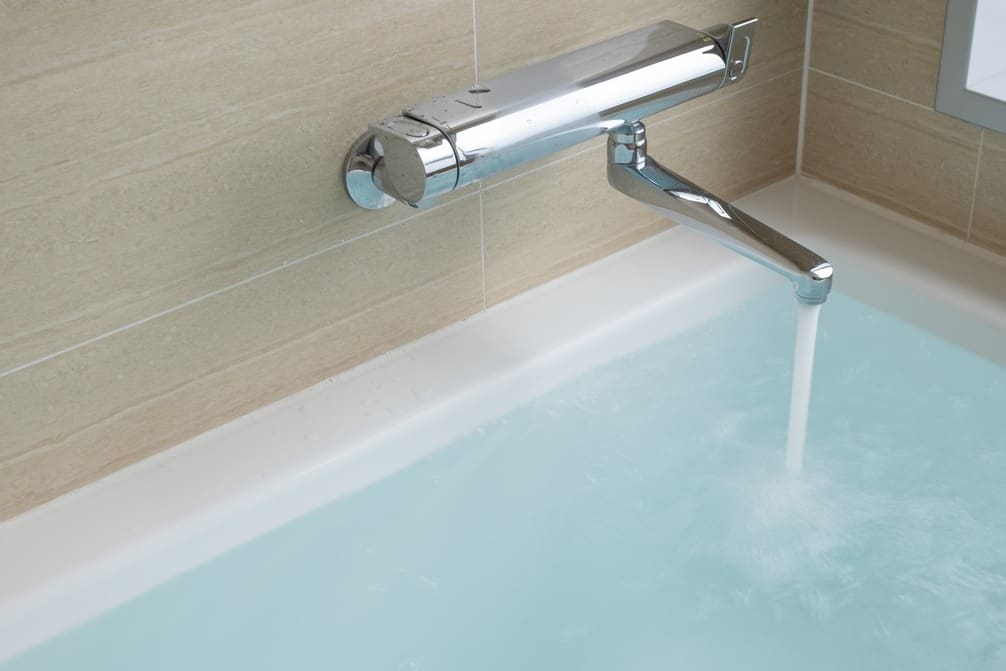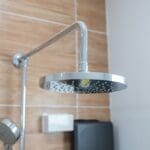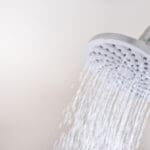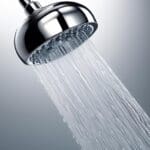Did you know that nearly 30% of households experience issues with their bathtub’s water flow, often with water coming out of the shower head when trying to fill the tub?
You’re not alone if you’ve faced this frustrating issue. The causes can range from a faulty diverter valve, which is supposed to direct water flow, to simple wear and tear on your plumbing system.
Before you consider tearing down walls or making costly calls to a plumber, there’s a range of DIY solutions that can help. From checking the diverter’s functionality to replacing worn-out parts, you have options. We’ll guide you through identifying the problem and implementing simple fixes that could save you time and money.
You might wonder, what’s the first step to diagnosing and solving this issue effectively? Let’s explore that together.
Key Takeaways
- Malfunctioning diverter valve is a common cause of water flow issues.
- Infrequent switching between shower and tub settings can cause the diverter to get stuck.
- Cleaning or replacing parts can improve water flow and prevent future issues.
- Regular maintenance and testing are essential for maintaining proper water flow.
Identify the Problem
To effectively address the issue, it’s crucial to first identify why water is simultaneously flowing from your shower head while the bathtub is filling. This problem typically stems from a malfunction within the diverter valve. This valve’s purpose is to direct water flow either to the tub spout or to the shower head, depending on your preference. When it’s not working correctly, you’ll find water escaping through both outlets.
A common cause for this malfunction is wear and tear. Over time, the diverter valve can degrade, lose its seal, or become clogged with mineral deposits, leading to inefficient operation. It’s also possible that the diverter is simply stuck due to infrequent switching between the shower and tub settings, causing water to leak through to the shower head when you’re trying to fill the bathtub.
Understanding the root cause is the first step toward a solution. Once you’ve pinpointed the issue with the diverter valve, you’re well on your way to fixing the problem and ensuring water flows where it’s supposed to, whether that’s through the tub spout or the shower head.
Inspect the Diverter Valve
Inspecting the diverter valve is a crucial step in diagnosing why water is escaping through your shower head during bathtub filling. If you’re dealing with this issue, it’s time to roll up your sleeves and get to work.
First off, check if the diverter on the tub spout is fully opening. Sometimes, it may be partially obstructed, which could lead to the problem at hand. Don’t overlook this; it’s a simple yet common culprit.
Next, look inside the pipe for any signs of corrosion. Corrosion can create back pressure, messing with the water flow and possibly causing it to find its way through your shower head instead of filling the tub as intended. This isn’t just a nuisance; it’s a signal that your system needs attention, potentially indicating it’s time for a new shower setup.
Also, make sure there’s enough head pressure in the pipe. Low pressure can lead to water escaping where it shouldn’t. Verify the height of the valve too; sometimes, adjusting or replacing it solves the issue.
Lastly, ensure the quick shut-off is turned on. It plays a key role in directing water flow correctly. If it’s off, you’ve found your issue.
Clean or Replace Parts
After inspecting the diverter valve, it’s crucial to either clean or replace parts that aren’t functioning properly to ensure your shower operates efficiently. If you’ve noticed your tub spout diverter isn’t opening fully, this could be the root of the problem. Take the time to clean or replace this part. A clogged or malfunctioning diverter can significantly impact water flow to your shower.
Adding a shut-off valve at the showerhead spout or directly above the showerhead allows you to control the flow more precisely. This step can make a big difference in your water flow issues without requiring a complete overhaul of your plumbing system. For those looking for an easier fix, consider investing in a showerhead with a built-in shut-off valve. This feature offers convenience and efficiency in managing water flow.
Lastly, if you’re facing persistent low water flow issues, assess the diameter of your downspout. Replacing it with a larger diameter pipe can improve water flow, enhancing your shower experience. Remember, the goal is to ensure a consistent, satisfying water flow, so don’t hesitate to clean or replace parts as needed to maintain your shower’s performance.
Test Water Flow
Having addressed the importance of cleaning or replacing malfunctioning parts, it’s crucial you now test the water flow to ensure these adjustments have effectively resolved the issue. Start by turning on the shower to see if water comes out of the shower head while the bathtub is filling. This simple test can reveal if your efforts have paid off or if further action is needed.
Here’s a concise guide to ensure everything is in tip-top shape:
- Check the Diverter: Ensure the diverter on the tub spout is fully opening. A partial opening might be why your shower isn’t getting enough water when the bathtub is filling. If you’ve recently used pex tubing in your setup, ensure it’s not kinking or bending, restricting water flow.
- Inspect for Corrosion: Corrosion inside the pipes can cause back pressure, affecting the water flow. If you have a Tankless Water Heater, ensure it’s not contributing to the issue by restricting flow due to scale buildup.
- Measure Head Pressure: Use a gauge to measure the head pressure in the pipe. Insufficient pressure could be the culprit. Also, test if the height of the valve impacts water flow, as adjustments might be necessary for optimal performance.
Prevent Future Issues
To prevent future issues with your shower’s water flow, it’s essential to regularly clean and maintain the shower head. This routine care helps avoid clogs and mineral buildup that can disrupt water flow and pressure. But it’s not just about keeping the shower head clean. You also need to replace worn-out washers or seals to prevent leaks, which could affect the efficiency of your shower and bathtub water flow.
Moreover, checking and adjusting the water pressure ensures it’s at a suitable level for both your shower and bathtub. Too high or too low water pressure can lead to a variety of problems, including the one you’re trying to fix. Use compatible materials during any plumbing installation to avoid future issues. Mismatched materials can lead to premature wear and tear, leaks, and other complications that might disrupt water flow.
For complex problems or proper plumbing installation, don’t hesitate to hire a professional plumber. Their expertise can help you address issues effectively and prevent future problems, ensuring a steady and reliable water flow in your shower and bathtub.
Frequently Asked Questions
Why Is Water Coming Out of the Shower Head While Filling Bathtub?
You’re likely seeing water from the shower head while filling the tub due to a faulty diverter, corrosion inside the pipe, inadequate head pressure, or the quick shut-off being turned off.
Why Does My Shower Head Leak When the Bath Is Running?
Your shower head leaks when the bath runs due to a malfunctioning diverter, internal corrosion causing back pressure, inadequate head pressure, or the quick shut-off being off. Addressing these issues should resolve the problem.
Why Is My Shower and Tub Water at the Same Time?
You’re facing a diverter valve issue if your shower and tub are running simultaneously. Without opening the wall, you might try adjusting or replacing the valve. Consider professional help for a precise fix.
Why Is Water Still Coming Out of My Bathtub Faucet When I Turn on the Shower?
You’re likely dealing with a faulty diverter, corrosion inside the pipe, or insufficient head pressure. These issues prevent proper water diversion to the shower, causing it to still pour out of your bathtub faucet.





